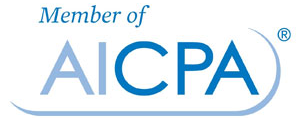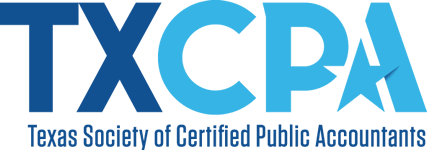
Payroll taxes – a term that can evoke a certain level of complexity and apprehension among small business owners. For the uninitiated, payroll taxes are federal, state and local taxes that employers are required to withhold and pay on behalf of their employees. They cover income taxes, Social Security and Medicare contributions (FICA), and unemployment insurance taxes (FUTA and SUTA).
Understanding these obligations is not just about compliance; it’s about protecting your business. The IRS levied $5.3 billion in payroll tax penalties against businesses in 2018 alone. Steep fines and penalties await those who fail to comply with these regulations.
This article serves as an Employer’s Guide to Payroll Taxes. It aims to simplify the intricacies of payroll taxes – from calculation and withholding to reporting and filing requirements. In addition, it underscores the value of online payroll services for small businesses, presenting how technology can streamline processes, reduce errors, and ultimately save time.
Make no mistake, payroll tax mistakes can be costly. Did you know that nearly half of small businesses spend at least three hours each month handling payroll taxes? That’s a significant chunk of time that could be better used in growing your business.
Understanding Payroll Taxes
To understand payroll taxes, let’s start with the basics. Payroll taxes are mandatory deductions that employers take from an employee’s salary and send to the government. There are different types of employment taxes, each serving a specific purpose.
The main types of payroll taxes are:
Federal Income Tax Withholding (FITW): This tax is deducted from an employee’s total pay based on the information provided in their Form W-4.
State Income Tax Withholding: Not all states have this tax. The amount withheld depends on the tax laws of each state.
Federal Insurance Contributions Act (FICA) Taxes: This includes two separate taxes – Social Security and Medicare. Employers withhold a percentage of the employee’s wages and also contribute a matching amount.
Federal Unemployment Tax Act (FUTA) Tax: This tax is paid entirely by the employer and goes towards funding state unemployment agencies.
State Unemployment Tax (SUTA): Similar to FUTA, but at the state level, this tax is usually paid by employers, although some states require employees to contribute as well.
Understanding each type of employment tax and its purpose helps us know where these funds are used.
FITW and State Income Tax Withholding fund various government services and are based on the employee’s income, filing status, and allowances claimed.
FICA Taxes are important for supporting welfare programs such as Social Security, which provides benefits for retirees, disabled individuals, and their families; and Medicare, which offers health insurance for people aged 65 or older.
The money from both FUTA and SUTA goes into unemployment insurance programs that provide temporary income to unemployed workers who have lost their jobs through no fault of their own.
It’s not just about understanding and deducting these taxes, but also about following all the rules and regulations. Employers need to be careful about important matters such as correctly classifying workers as either employees or independent contractors, as getting it wrong can result in large fines and penalties. They must also avoid payroll tax fraud, which includes practices like paying employees under the table or not sending the withheld taxes to the government.
Understanding payroll taxes is crucial for any business owner. This knowledge not only ensures smooth operations but also helps prevent legal issues. In the next sections, we will explore more details about how to calculate, deduct, and report these taxes.
Calculating and Withholding Payroll Taxes
Calculating income tax withholdings and managing payroll taxes effectively are critical tasks for employers. Here’s a closer look at the steps involved and the rates that apply to Social Security and Medicare taxes, as well as Federal Income Tax obligations.
1. Income Tax Withholding
The cornerstone of payroll tax compliance begins with accurately calculating income tax withholdings for each employee. This involves several key steps:
Collect Employee Information: Employees provide their filing status, multiple jobs adjustments, dependents, and other income or deductions on Form W-4. It’s essential for employers to use the most current form as it reflects the latest tax brackets and law changes.
Refer to IRS Withholding Tables: The IRS publishes annual withholding tables in Publication 15-T, which employers must use alongside Form W-4 to determine how much federal income tax to withhold from an employee’s pay.
Account for Additional Adjustments: Employees may request additional withholding amounts or claim exemption from withholding if they meet specific criteria.
By meticulously following these guidelines, employers ensure that the correct amount of federal income tax is withheld from each paycheck, mitigating any unwelcome surprises for employees during tax season.
2. Social Security and Medicare Taxes
Social Security and Medicare taxes, collectively known as FICA (Federal Insurance Contributions Act) taxes, have fixed rates set by law:
Social Security Tax is withheld at 6.2% of an employee’s gross wages up to a wage base limit set annually by the SSA (Social Security Administration). Incomes above this threshold are not subject to Social Security taxes.
Medicare Tax is levied at 1.45% on all earnings with no wage base limit. Additionally, high earners may be subject to an Additional Medicare Tax of 0.9%, which applies to certain thresholds based on filing status.
Employers match these contributions for each employee, effectively doubling the amount paid towards these programs.
3. Federal Income Tax Deposits
Employers bear the responsibility not only for withholding Federal Income Tax but also for depositing these funds with the IRS:
Deposit Schedules: Employers must adhere to semi-weekly or monthly deposit schedules based on their total tax liability in the preceding four-quarter period.
Electronic Deposits: The Electronic Federal Tax Payment System (EFTPS) is typically used for making deposits, although some businesses may have special requirements.
Timeliness and Accuracy: Late deposits can incur penalties, so punctuality and precision are paramount when fulfilling this duty.
By understanding these elements of payroll tax management—income tax withholding, Social Security and Medicare taxes, and Federal Income Tax deposits—employers can navigate through their fiscal responsibilities with confidence. Accurate calculation and timely action in depositing these taxes are essential practices that contribute significantly to the financial health of both employees and businesses alike.
Reporting and Filing Requirements for Payroll Taxes
The journey through the labyrinth of payroll taxes doesn’t end with calculation and withholding. A key component in this process is accurate reporting and timely filing of payroll tax returns. To navigate this process efficiently, employers must be familiar with the relevant forms, such as Form 941.
Form 941, also known as the Employer’s Quarterly Federal Tax Return, serves as a quarterly report where employers provide information about income taxes, social security tax, or Medicare tax withheld from employee’s paychecks. It also outlines the employer’s portion of social security or Medicare tax. Accuracy in filling out Form 941 is paramount, as any discrepancy may lead to penalties.
In addition to Form 941, there are other vital documents necessary for reporting purposes such as W-2s and W-3s which are required at the end of the year. These forms provide a summary of wages earned and taxes withheld during the year from employees’ paychecks.
To assist employers in meeting their payroll tax obligations, IRS Circular E plays a crucial role. Officially known as the Employer’s Tax Guide, IRS Circular E serves as a comprehensive resource detailing updated wage bracket tables, deposit schedules, and instructions on how to calculate each employee’s withholding.
Using IRS Circular E can help businesses:
- Determine how much income tax to withhold
- Understand when and how to deposit taxes
- Gain insight into filling out forms correctly
- Stay updated on recent changes in federal income tax laws
The frequency of payroll tax deposits throughout the year depends on an employer’s size and total tax liability. The IRS specifies two main deposit schedules: monthly depositor or semi-weekly depositor.
Monthly Depositor
You report employment taxes on a monthly basis if your total tax liability was $50,000 or less during the lookback period. The deposits are due by the 15th day of the following month.
Semi-Weekly Depositor
You report employment taxes more frequently if your total tax liability was more than $50,000 during the lookback period. The deposit schedule here can be either Wednesday or Friday, depending on when wages were paid.
Reporting and filing payroll taxes is an integral part of managing a small business. Equipping oneself with knowledge about Form 941 and IRS Circular E, as well as understanding deposit schedules, can help employers streamline their payroll process and avoid potential penalties.
Benefits of Using Online Payroll Services for Small Businesses
Embracing technology has become a necessity for small businesses, especially when it comes to managing payroll. Payroll services online offer a suite of features that can transform the traditional payroll process into an efficient and streamlined operation. This section explores the advantages of these digital solutions and outlines essential features to consider when choosing the best payroll for small business.
Automated Tax Calculations and Electronic Filing Capabilities
The integration of automation in online payroll services simplifies complex calculations that are prone to human error. These platforms use sophisticated algorithms to:
- Accurately calculate payroll taxes for each employee
- Determine the correct amount of federal, state, and local taxes to withhold
- Update tax rates automatically as they change
Moreover, electronic filing capabilities are a cornerstone of modern payroll services. They enable businesses to:
- File all necessary payroll tax forms directly with the IRS and state agencies
- Submit year-end tax documents like W-2s and 1099s efficiently
- Receive confirmation receipts for submitted forms, providing peace of mind
Time Savings and Reduced Error Risk
Outsourcing payroll functions to a trusted provider allows small business owners to focus on core business activities rather than getting bogged down in administrative tasks. The benefits include:
- Significant time savings by eliminating manual data entry
- Reduction in costly errors that could lead to penalties or audits
- Streamlined payroll runs that can be completed with just a few clicks
Essential Features of Top Online Payroll Services
When evaluating potential payroll partners, look for services that offer not just basic functionalities but also advanced tools designed to make payroll management as effortless as possible. Key features include:
- Tax Guarantee: This feature ensures that if the service provider makes an error in calculating taxes, they will take responsibility for any incurred penalties or interest.
- Employee Self-service Portal: An online portal where employees can access pay stubs, tax documents, and update personal information without requiring HR intervention.
- Direct Deposit: Employees enjoy the convenience of having their paychecks deposited directly into their bank accounts on payday.
- Mobile Access: The ability to manage and run payroll from anywhere through mobile apps is highly beneficial for busy entrepreneurs.
- Integration with Other Software: Seamless connectivity with accounting software like QuickBooks or Xero automates data transfers and keeps financial records synchronized.
- Customizable Payroll Reports: Create reports tailored to specific business needs for deeper insights into labor costs and trends.
- Compliance Alerts: Notifications about changes in tax laws or deadlines help businesses stay compliant with regulations.
Selecting a service that offers these comprehensive options ensures not only compliance but also operational efficiency.
Choosing the Right Payroll Service Provider
Choosing a payroll service provider can seem daunting, but understanding key considerations can simplify the process. These include the cost of services, security measures in place, and customer support options provided.
Assessing Cost
The cost of payroll services varies significantly between providers. For small businesses operating on a tight budget, cost-effectiveness is crucial. Providers often base their charges on the number of employees and payment frequency. Some might offer bundled services at a discounted rate, while others charge separately for each service. Always assess what’s included in the package to ensure there are no hidden fees.
Considering Security Measures
Security is another vital factor when choosing a payroll provider. The provider will handle sensitive employee data, including Social Security numbers and banking information. Therefore, it’s essential to select a provider that uses advanced data encryption, multi-factor authentication, and other robust security measures.
Evaluating Customer Support
A reliable provider should offer exceptional customer support to address any issues or concerns promptly. Look for providers who offer multiple avenues for support such as phone, email, or live chat. Also consider their hours of operation—24/7 support could be valuable when dealing with time-sensitive payroll issues.
When it comes to payroll outsourcing services, business owners often find themselves torn between outsourcing and handling payroll in-house or using software.
Outsourcing Payroll Functions
Outsourcing payroll functions to third-party vendors comes with several advantages:
- Expertise: Vendors specialize in handling payroll processes efficiently.
- Compliance: They stay updated with tax laws and regulations.
- Time-saving: Allows businesses to focus more on their core operations.
However, potential drawbacks should also be considered:
- Control: Outsourcing means less control over this critical business function.
- Cost: It may be expensive for very small businesses.
- Dependence: There may be delays or issues if the vendor encounters problems.
In-house Payroll or Software
If a business chooses to handle payroll in-house or use software, the advantages include:
- Control: Full control over payroll processes.
- Cost: Potentially less expensive, especially for very small businesses.
The disadvantages are:
- Time-consuming: Requires significant time and resources.
- Compliance risk: Business owners must stay updated on tax laws and regulations.
- Technical issues: Using software can come with technical challenges.
For small businesses that value a personal touch, a local payroll company can be an excellent choice. These companies understand the local, regional tax laws and can provide personalized assistance. However, they may not have as many resources or as advanced technology as larger, national firms.
In the end, each business must determine which factors are most important to them. Balancing cost, control, technology, expertise, and the level of personal interaction will help identify the best payroll providers for small businesses.
Payroll Services in Texas
Navigating the terrain of payroll in Texas requires a nuanced understanding of various state-specific regulations. With no state income tax, businesses in the Lone Star State must still adhere to certain withholding requirements and ensure compliance with the Texas Workforce Commission (TWC) guidelines.
Key Considerations for Texas Payroll:
- Unlike many other states, Texas does not impose a state income tax on individuals. However, employers are responsible for handling unemployment tax. It’s crucial for businesses to understand the implications of this unique tax structure and manage their payroll accordingly.
- For electronic filing, the TWC sets thresholds that dictate reporting frequencies. Employers need to stay abreast of these thresholds to maintain compliance and avoid penalties.
- The TWC requires employers to pay Unemployment Insurance taxes, which fund temporary support for workers who have lost their jobs. Employers must calculate this tax based on their employees’ wages and submit payments quarterly.
Advantages of Dallas-Based Payroll Providers:
Businesses situated in or around Dallas can derive numerous benefits from partnering with a local tx payroll provider:
- A Dallas payroll service will have specialized knowledge of both state-level regulations and nuances specific to the Dallas-Fort Worth area. This expertise ensures that businesses remain compliant with all local ordinances.
- Opting for a provider within close physical proximity means better opportunities for in-person support. Should an issue arise, face-to-face consultations are more feasible.
- A local Texas payroll service can offer valuable insights into regional economic trends, enabling businesses to make informed decisions that align with local market dynamics.
By choosing a payroll services dallas provider adept at addressing these specificities, businesses protect themselves against potential missteps and leverage localized expertise for optimal payroll management.
FAQs (Frequently Asked Questions)
What are payroll taxes and why are they important for small businesses?
Payroll taxes are various deductions from an employee’s salary, including income taxes and contributions to Social Security and Medicare (FICA), as well as federal and state unemployment taxes. Small businesses need to handle these taxes carefully to support important government programs and avoid penalties.
How do I calculate the correct amount of payroll taxes to withhold from my employees’ wages?
To calculate accurate payroll tax withholdings:
- Refer to the IRS withholding tables.
- Use the information provided by employees on their Form W-4.
Online payroll services can automate these calculations, ensuring compliance with current tax rates and regulations.
What are FICA taxes, and how much should I withhold?
FICA stands for Federal Insurance Contributions Act, which requires employers to withhold:
- Social Security tax at 6.2% up to the wage base limit
- Medicare tax at 1.45%, with no wage limit
Employers match these contributions for each employee.
| Component | Description | Rate | Wage Base Limit |
| Social Security Tax | Required withholding under FICA for retirement | 6.2% | Up to the wage base limit |
| Medicare Tax | Required withholding under FICA for healthcare | 1.45% | No limit |
| Employer Match | Employers match the contributions for each employee. | Identical to employee rates | Applicable as per employee rates |
When are payroll tax deposits due?
The deposit schedule for payroll taxes can be either monthly or semi-weekly, depending on the total tax liability reported in a lookback period defined by the IRS. Utilizing online payroll services often includes reminders or automated deposit features to help meet these deadlines.
What forms do I need for reporting payroll taxes?
Employers typically report payroll taxes using Form 941 quarterly. Annually, they must file Form 940 for federal unemployment tax, along with providing employees with Form W-2 summarizing yearly wage and tax information.
Can I handle payroll taxes myself or should I consult a professional?
While it is possible to manage payroll taxes independently, consulting with a tax professional or leveraging reliable online payroll services is advised to navigate complex regulations effectively and reduce the risk of errors that could lead to penalties.
By ensuring access to up-to-date information and tools through professional advice or advanced software solutions, small business owners can confidently maintain compliance within this critical aspect of their operations.
Conclusion
Navigating payroll taxes can be challenging, but it doesn’t have to be. The right tools and resources can help businesses efficiently manage their payroll tax obligations.
Online payroll services for small businesses act as a powerful tool in this regard. They offer automated tax calculations, electronic filing capabilities, and outsourced payroll services to save time and reduce the risk of errors.
Maximize efficiency by investing in top online payroll services for small businesses. It’s not merely about compliance; it’s about freeing up valuable time to focus on the core operations that drive business growth.
The benefits of leveraging technology are clear:
- Automated calculations reduce the chances of errors.
- Electronic filing streamlines the process.
- Outsourcing allows business owners to focus on what they do best: running their business.
Don’t let complex tax regulations slow your business growth down. Equip yourself with the right tools and knowledge to handle payroll taxes effectively. Take that first step by exploring our recommended top online payroll services. Invest in your peace of mind today.
Remember, efficient tax administration is more than a duty—it’s a strategic advantage.










